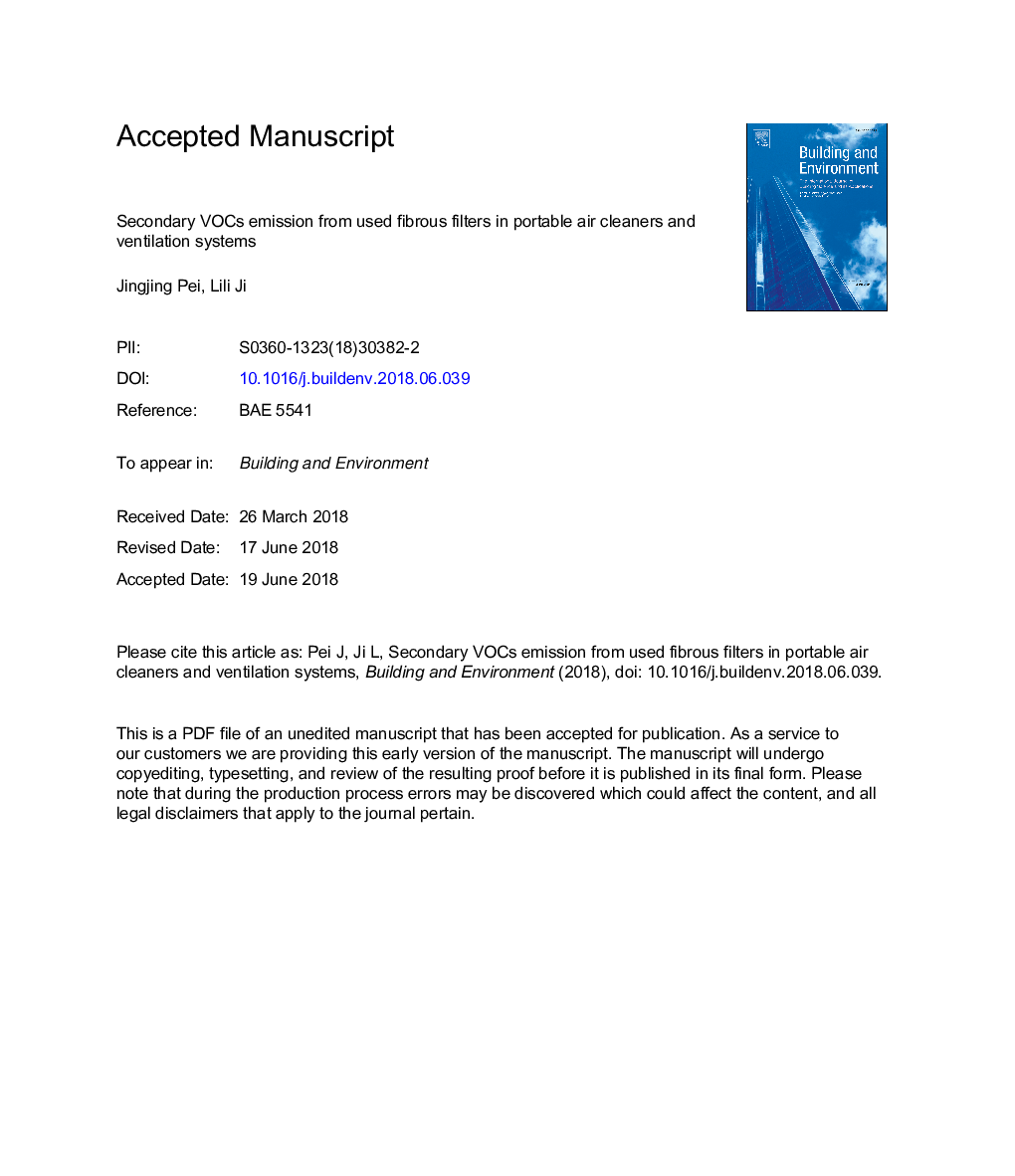| کد مقاله | کد نشریه | سال انتشار | مقاله انگلیسی | نسخه تمام متن |
|---|---|---|---|---|
| 6696881 | 1428350 | 2018 | 23 صفحه PDF | دانلود رایگان |
عنوان انگلیسی مقاله ISI
Secondary VOCs emission from used fibrous filters in portable air cleaners and ventilation systems
دانلود مقاله + سفارش ترجمه
دانلود مقاله ISI انگلیسی
رایگان برای ایرانیان
کلمات کلیدی
موضوعات مرتبط
مهندسی و علوم پایه
مهندسی انرژی
انرژی های تجدید پذیر، توسعه پایدار و محیط زیست
پیش نمایش صفحه اول مقاله

چکیده انگلیسی
Previous research suggests that filters used in indoor portable air cleaners or ventilation systems may be an indoor pollutant source at some point of using when it is loaded with certain amount of particle or gas phase pollutants. To evaluate its influence on indoor air quality, both qualitative and quantitative analysis of the potential source is needed. This study aims at investigating secondary volatile organic compounds (VOCs) emission from used fibrous particle filters. Used filters from portable air cleaners used in real life were collected. HEPA fibrous filters challenged by outdoor dust were investigated to simulate its application in residential fresh air system. Filter samples were stored in room temperature and three different relative humidity settings before testing. The emitted VOCs species and emission rate were measured using a single-pass test system, with TENAX sorbent tubes sampling and GC-MS analysis method. The emitted TVOC concentration profile with time presented a single-peak curve. The data indicated that the TVOC emission rate of used filters were influenced by both dust loading amount and environmental VOCs level. With the same dust loading, TVOC emission rate of filters challenged by indoor dust was 2-10 times higher than filters challenged by outdoor dust. When the environmental VOCs concentration was stable, there is a liner relationship between TVOC emission rate and dust loading. The TVOC emission rate was in the range of 0.63mg/m2-3.46â¯mg/m2 for filters used in portable air cleaners. After exposure in humid environment, the total emitted TVOC generally decreased with the major decrease of Alkanes, Aromatics, Esters and Alcohols categories, while the emission rate of Aldehydes, Ketones and Olefins increased. Possible reason was discussed.
ناشر
Database: Elsevier - ScienceDirect (ساینس دایرکت)
Journal: Building and Environment - Volume 142, September 2018, Pages 464-471
Journal: Building and Environment - Volume 142, September 2018, Pages 464-471
نویسندگان
Jingjing Pei, Lili Ji,